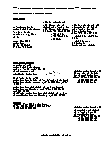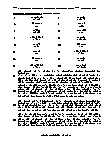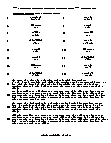Linear Quadratics Worksheets
What Are Linear Quadratics? A system that contains one linear equation and one quadratic equation that is commonly one parabola and one straight line. A simple linear system holds two linear equations and those are two straight lines. Linear functions are graphed as straight lines because the x variable is not raised to any exponent. They are like the flat bridge. Quadratic functions are typically in the form y = ax2 + bx + c. A linear equation in two variables does not include any power higher than one for either variable. It has the general form Ax + By + C = 0, where A, B and C are constants. A quadratic equation, instead, involves one of the variables raised to the second power. It has the general form y = ax2 + bx + c.
-
Basic Lesson
Guides students solving equations that involve an Linear Quadratics. Demonstrates answer checking.
View worksheet -
Intermediate Lesson
Demonstrates how to solve more difficult problems. Example: David is traveling on a highway at a constant rate of 50 miles per hour. Sam accelerates at a constant rate to catch David. The distance d, in miles, that Sam travels as a function of time t, in hours, since David has passed is given by d = 2800 t2. Write and solve a system of equations to calculate how long it takes Sam to catch up David.
View worksheet -
Independent Practice 1
The range of a lighthouse is a circular region bounded by equation: x2 + y2 = 36. A straight road within the service area is represented by y = 3x + 2. Find the length of the road that lies within the range of the light service. (Assume 1 unit=1 km. Express the answer to the nearest tenth of a mile).
View worksheet -
Independent Practice 2
Students find the Linear Quadratics in assorted problems. The answers can be found below.
View worksheet -
Homework Worksheet
Students are provided with problems to achieve the concepts of Linear Quadratics.
View worksheet
Henri Poincare (1854 to 1912)
...by natural selection our mind has adapted itself to the conditions of the external world. It has adopted the geometry most advantageous to the species or, in other words, the most convenient. Geometry is not true, it is advantageous.






